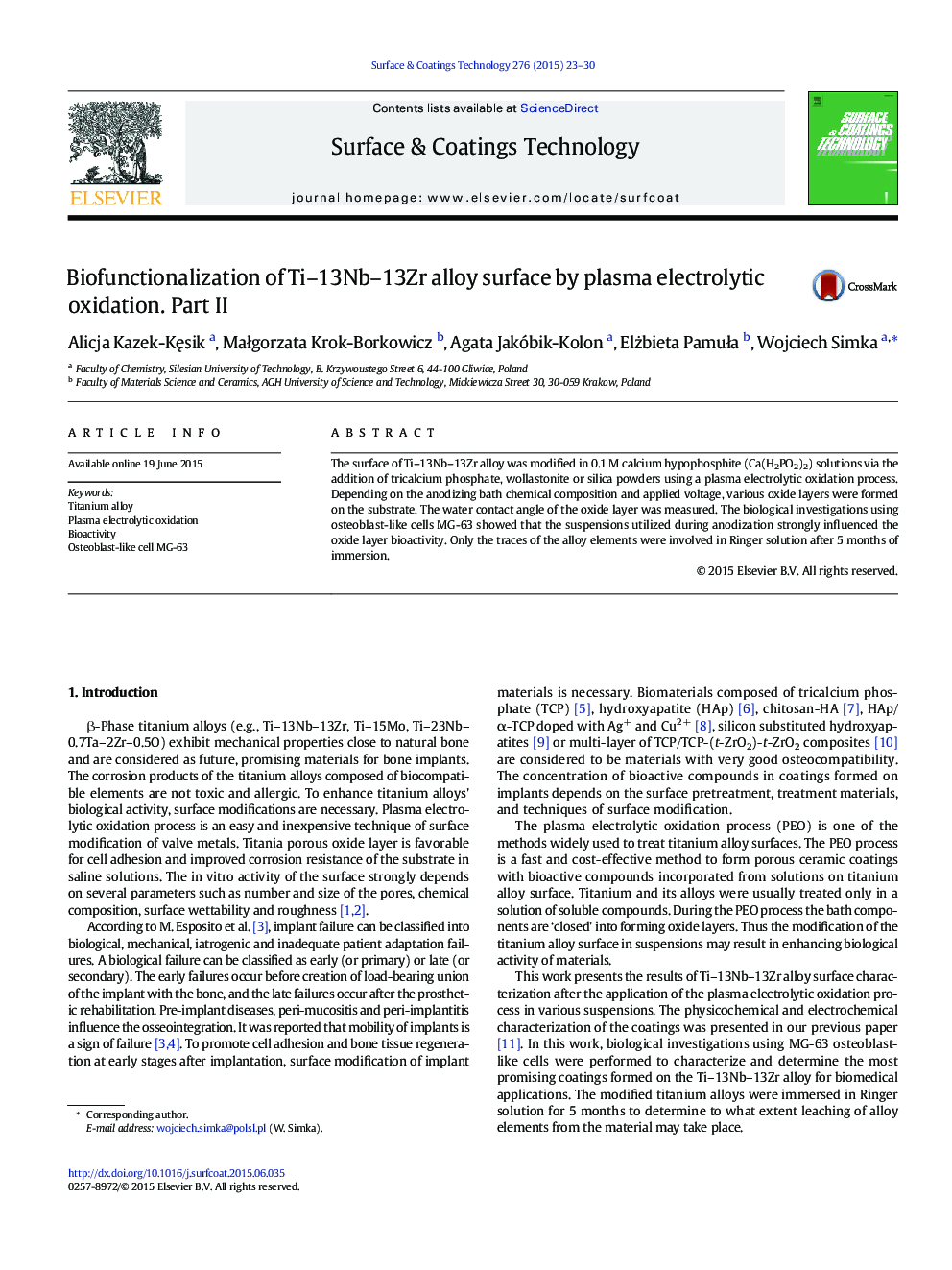| Article ID | Journal | Published Year | Pages | File Type |
|---|---|---|---|---|
| 1656952 | Surface and Coatings Technology | 2015 | 8 Pages |
•The modification of Ti–13Nb–13Zr alloy surface by the PEO process in various suspensions is proposed.•Addition of wollastonite into anodizing bath is more favorable for the growth of cells than tricalcium phosphate or silica.•The traces of the alloy elements involved in Ringer solution were investigated.
The surface of Ti–13Nb–13Zr alloy was modified in 0.1 M calcium hypophosphite (Ca(H2PO2)2) solutions via the addition of tricalcium phosphate, wollastonite or silica powders using a plasma electrolytic oxidation process. Depending on the anodizing bath chemical composition and applied voltage, various oxide layers were formed on the substrate. The water contact angle of the oxide layer was measured. The biological investigations using osteoblast-like cells MG-63 showed that the suspensions utilized during anodization strongly influenced the oxide layer bioactivity. Only the traces of the alloy elements were involved in Ringer solution after 5 months of immersion.
